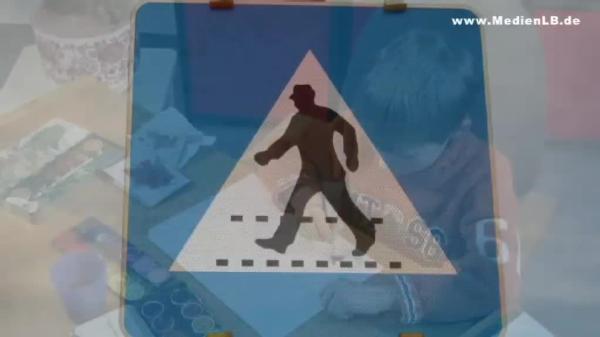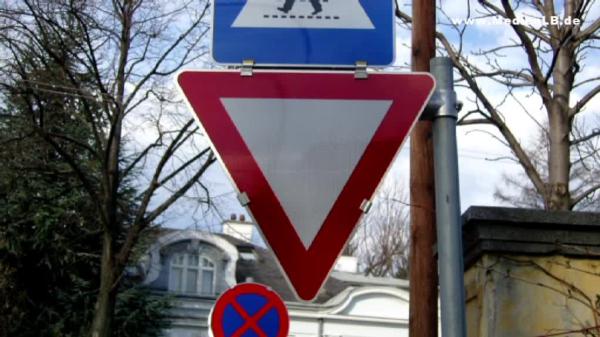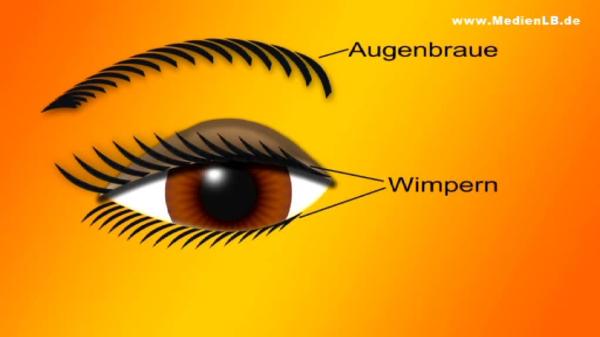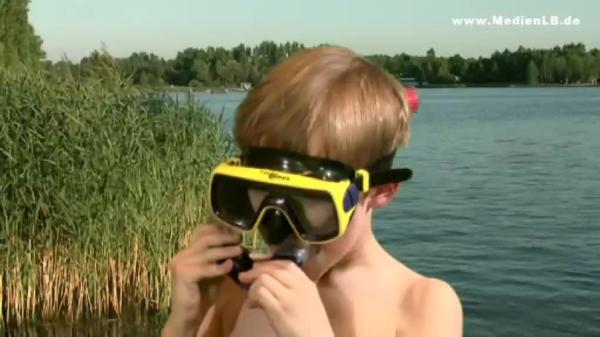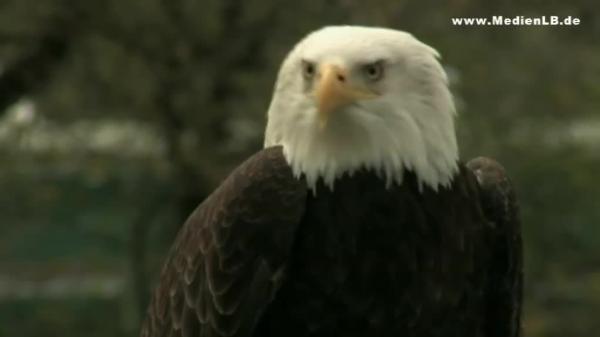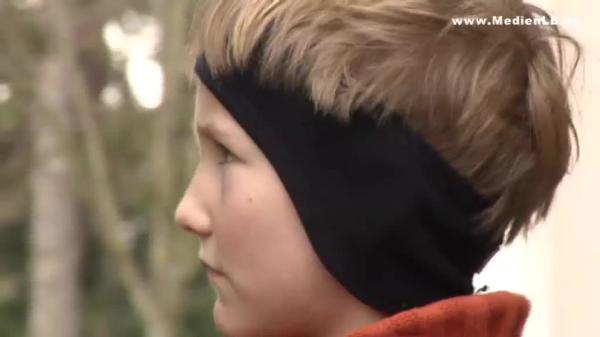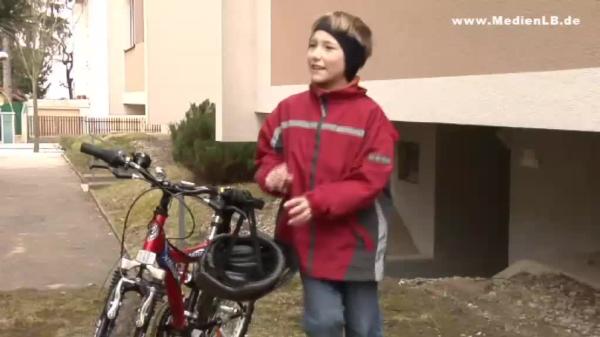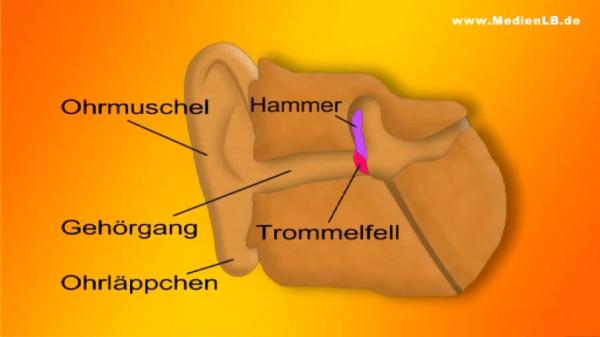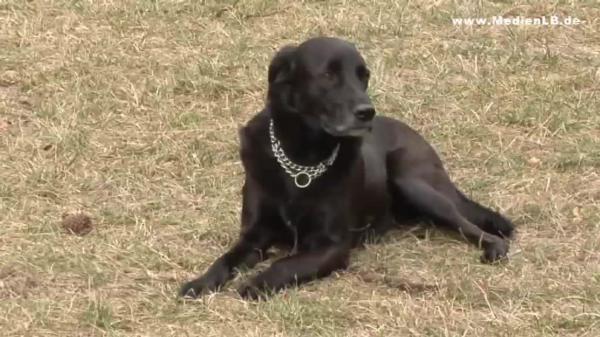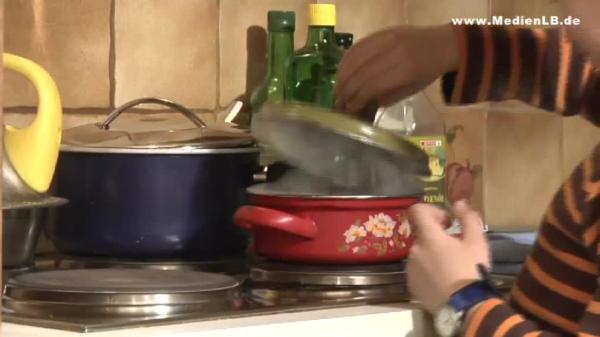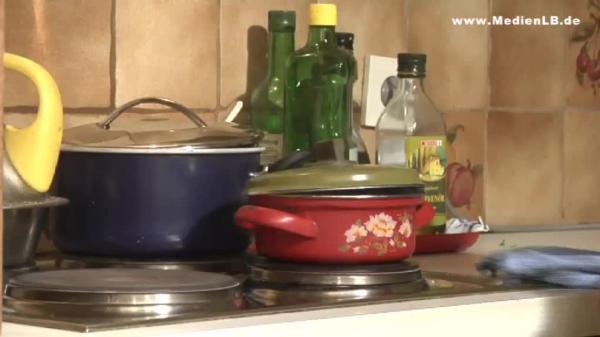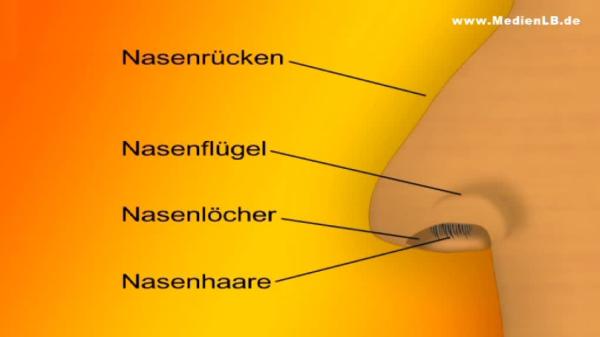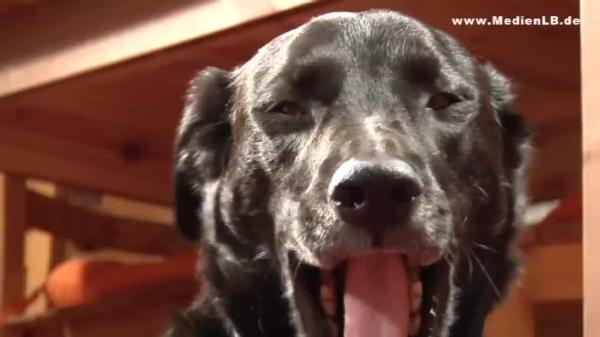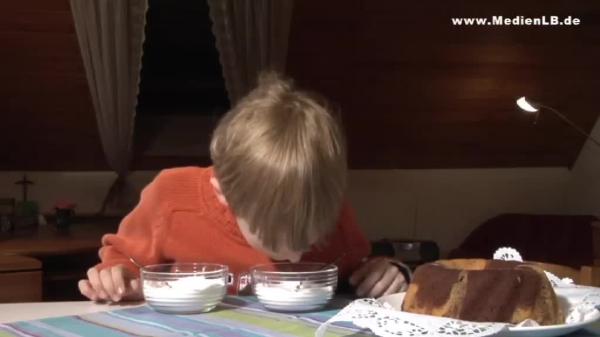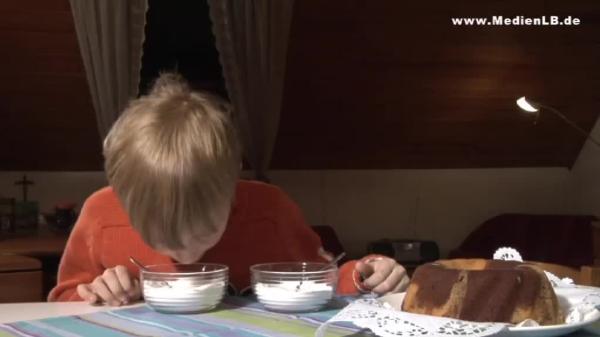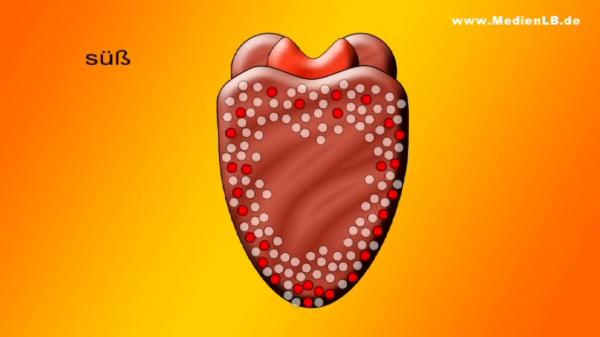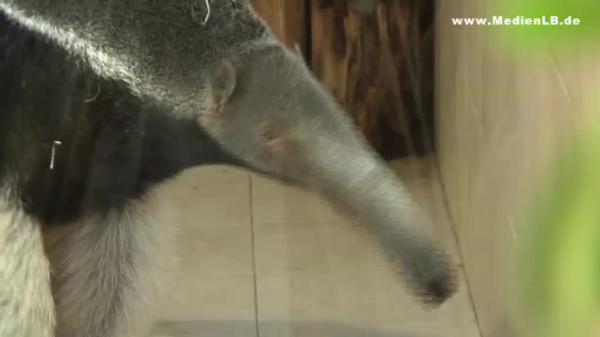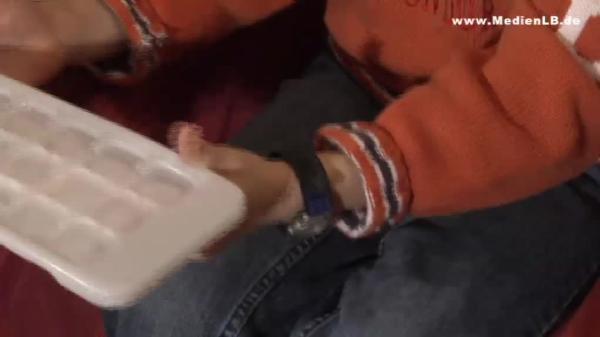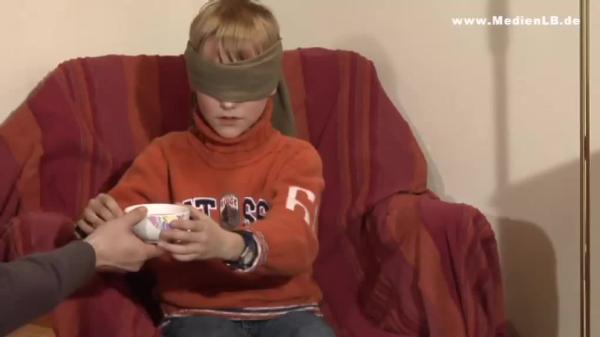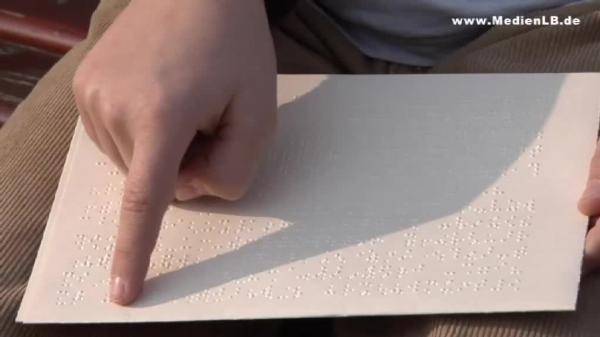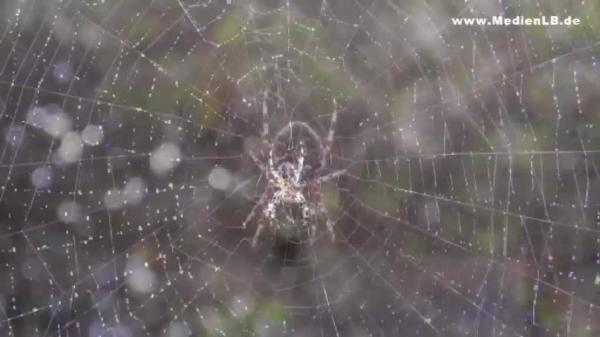Die Sinne
Sehen, Hören, Riechen, Schmecken und Fühlen

The Senses

Thomas loves playing with his dog in the park. He is there almost every day. Without thinking about it he uses his five senses daily: to see, to hear, to smell, to feel and to taste. With our senses we perceive our surroundings. Then the sensory organs send signals - information - to the brain. There everything we see, hear, taste, smell or feel is recorded. The brain controls everything we do: whether we play football, laugh and talk, eat and drink, think or listen to music, feel or move. With the help of our sensory organs eyes, ears, nose, tongue and skin we can perceive our surroundings clearly. Mostly we use several sense organs simultaneously to find out what something is like. 1. The Eyes 1.1 Sight With the eyes we can see. Our eyes are constantly moving: fast and in every direction. Without eyes we could recognize neither colours nor painted shapes. We couldn't recognize every-day symbols like road signs either. The eyes are our most important sense organ. Therefore: Keep your eyes open in road traffic! Then you can read the road signs. But you can also recognize what moves and what doesn't. And you can cross a road safely. And it is also of importance that you can see what happens in front of you and behind you. 1.2 The Anatomy of the Eye Let's have a closer look at the eye! The eye is round like a ball, you also call it eyeball. The eye lies well-protected in the eye socket in your head. The eyebrow separates the socket from the forehead and protects the eye, so that neither water nor sweat can get into it. The eyelashes are tiny hairs along the eyelid. They help to protect the eye against dirt and dust. The eyelid keeps the eye moist and clean. Moreover the eyelids are an extremely effective protection, for at the least danger the lids shut the sensitive eye. And when we are tired the eyelids close. The eyes are having a rest. The iris gives the eye colour. The colour of people's eyes is very different: brown, grey, green, or blue. The iris is protected by a transparent cornea. The dark circle in its centre is the pupil. Through it the light penetrates into the centre of the eye and we perceive what we are looking at. The pupil can become bigger and smaller. In bright light the pupil contracts – it shrinks to prevent glaring light from getting into the eye. In darkness the pupil widens to admit as much light as possible. You can observe yourself how the pupil works! Go and stand in front of a lit-up mirror! Shut your eyes for a short time! When you open them again, your pupils will be very large, because it was dark before. In the light they become small again quickly. 1.3 Eye Protection and Seeing Aid The eyes are very sensitive. But you can do a lot to protect your eyes. Never look directly into the sun! And protect your eyes against dazzling light with sun glasses! When diving use diving goggles! Always wear protective goggles when experimenting with hazardous substances! During a ride on a motorcycle the helmet with visor protects from the headwind and flying insects. A lot of people wear glasses. They see better with them. Without glasses they would have only a blurred vision of many things. For the sight to be unimpeded and not to go on decreasing it is important, however, to really wear the glasses! 1.4 Animal Eyes Animals, too, have eyes. Cows and horses have very big eyes, but can't see the better for them. A horse, for example, can't recognize clearly what is in front of it. However, it can see far to both sides without turning its head. The keen eyes of the eagle see far better than those of the human. Eagle eyes discover a mouse even from a distance of a thousand metres – as if through binoculars. Owls can see very well in the dark, although they can't move their eyes. However, they can turn their heads completely backwards. The eyes of the owl are far more sensitive to light than our eyes. But it needs such eyes for hunting by night. Frogs perceive only movement with their eyes. Cats are adapted to the night like the owls. In the dark they see far better than humans. By daylight their large pupils become narrow slits. 2. The Ears 2.1 Hearing With the ears we can hear. "Hey, sound on!" Hearing is important because we communicate with the help of language and because we find our way around by listening to our surroundings. 2.2 The Anatomy of the Ear Let's have a closer look at the ear. Externally we can well recognize the outer ear and the earlobe. The outer ear works like an auditory funnel and picks up all sounds. Through the auditory canal the sounds penetrate into the inner ear, to the ear-drum and cause this to vibrate. Behind the ear-drum there are the ossicles: hammer, anvil and stapes. the smallest human bones. The hammer scans the vibrations, the anvil passes them on and the stapes transmit them to the middle ear. The cochlea picks the vibrations up and transmits them to the brain through the auditory nerve. The brain recognizes which sound can be heard. If you increase the outer ear with both hands you can hear more loudly and clearly. 2.3 Protection of the Ear Our ears, too, are very sensitive. So be careful! Noise damages the ears! Therefore people working at noisy machines wear earmuffs. Your ears can't stand cold and wind very well either. So protect them by putting on a cap or a headband. 2.4 Animal Ears Animals, too, have ears. Rabbits for example have long ears, so as to hear better. Moreover, they can turn their ears in the direction from which the noise comes. Birds, in contrast, have only a small ear hole on each side of the head. Dogs hear very well. They can even detect sounds that humans cannot hear, for example very high sounds. 3. The Nose 3.1 Smell With the nose we can smell. The nose detects all smells in our immediate vicinity. What's this? There is a smell of burning here. That was a near miss........ Our nose warns us about dangers, too! 3.2 The Anatomy of the Nose Let's have a closer look at the nose. At once we can recognize the bridge of the nose, the sides of the nose and the nostrils. Inside the nose grow small hairs. They prevent dirt from getting into the nose. Through inhalation air gets into the nose carrying several smells. The olfactory organs in your nose signal to the brain. The brain identifies the smell and decides whether it is agreeable or disagreeable. The smell of a freshly baked cake for example stimulates the appetite. If the smell is disagreeable, we get a warning! Cigarette smoke for example doesn't only stink, it is also detrimental to your health. Our nose also warns us about the harmful exhaust fumes in the air. 3.3 Animal Noses Of course animals, too, have noses. Compared to some animals the humans' sense of smell is only weak. The elephant's nose is its long, mobile trunk. The elephant trunk is very sensitive and is used for smelling, drinking, grabbing and even feeling. Dogs are real sniffers. The smelling capacity of a dog is about one million times better than that of man. Dogs can detect smell already from far distances. The wasp can both smell and taste with its antennae. 4. The Tongue 4.1 Taste With the tongue we can taste. Thomas has baked a cake. Now he wants to dust it with sugar. But he doesn't know in which of the two glass containers the sugar is. He cannot see it, not feel it, not smell it and not hear it. But he can taste it! With the tongue we can taste if something is sweet, salty, sour or bitter. 4.2 The Anatomy of the Tongue Let's have a closer look at the tongue. The tongue is a longish muscle covered by a mucous membrane and so very mobile! On the top surface of the tongue there are the taste buds. They send signals to the brain. The brain recognizes how something tastes. Recent research results have shown that the human can identify, besides the four flavours sweet, sour, salty and bitter, also fatty and umami, that is meaty, savoury. When you have got a cold and your nose is blocked, you can't smell very well any more. Smell and taste belong together. The sense of smell, however, is far more sensitive than the sense of taste. 4.3 Animal Tongues Animals use their tongues in many different ways. The giraffe plucks leaves from the trees with its tongue. The parrot tries its food first with its tongue. The long proboscis of the ant-eater is used to track down its favourite food - termites. With its long tongue it simply licks up the termites in their mound. The frog, too, has a very long tongue. With lightning speed it catches insects with it, which get stuck to it and then are eaten. 5. The Skin 5.1 Skin and Hands With the hands we can feel our surroundings. We can feel whether something is round or square, cold or hot, rough or smooth, soft or hard, wet or dry. With our sense of touch we can even recognize people. Let's have a closer look at the hands! From above you see the back of the hand. When you turn your hand, you see the palms of your hand. Every human has got five fingers: thumb, forefinger, middle finger, ring finger and little finger. The friction ridges on your fingertips represent your personal fingerprint. The fingerprint of every human being is unique. Considering its surface the skin is the largest and most versatile organ of man. The skin covers your whole body and is a natural, regrowing protective suit. The skin registers every touch. 5.2 Feeling and Touch The skin of your fingertips is particularly sensitive, therefore you can feel and detect best with your fingers. Blind people can even read with their fingers. Also Thomas wants to feel Braille. Its letters consist of small, spherical dots. Feeling and decoding them correctly, however, needs just as much practice as the reading of printed letters. The skin also sends signals to the brain. For example it can feel and distinguish between temperatures. It also warns you about dangers, for example excessive heat. If your body suffers damage, it hurts. The pain is a warning signal of your body. 5.3 Animal Sense of Touch Animals, too, can feel. Cats touch obstacles with their whiskers and thus recognize the right way. Like that they find their way around even in the dark. A snail makes out its surroundings with its whole body, but especially with its feelers. The spider weaves a net from spider silk. If an insect is caught in the net, the spider feels the movement especially with the hair on its legs. That signals that a prey has got caught. Summary: The Five Sensory Perceptions Let's summarize: Man has got five senses: He can see, feel, taste, smell and hear. With the help of your eyes, your skin, your tongue, your nose and your ears you can recognize your surroundings and find your way around. Your sensory organs are vital and sensitive! Take good care of them!


